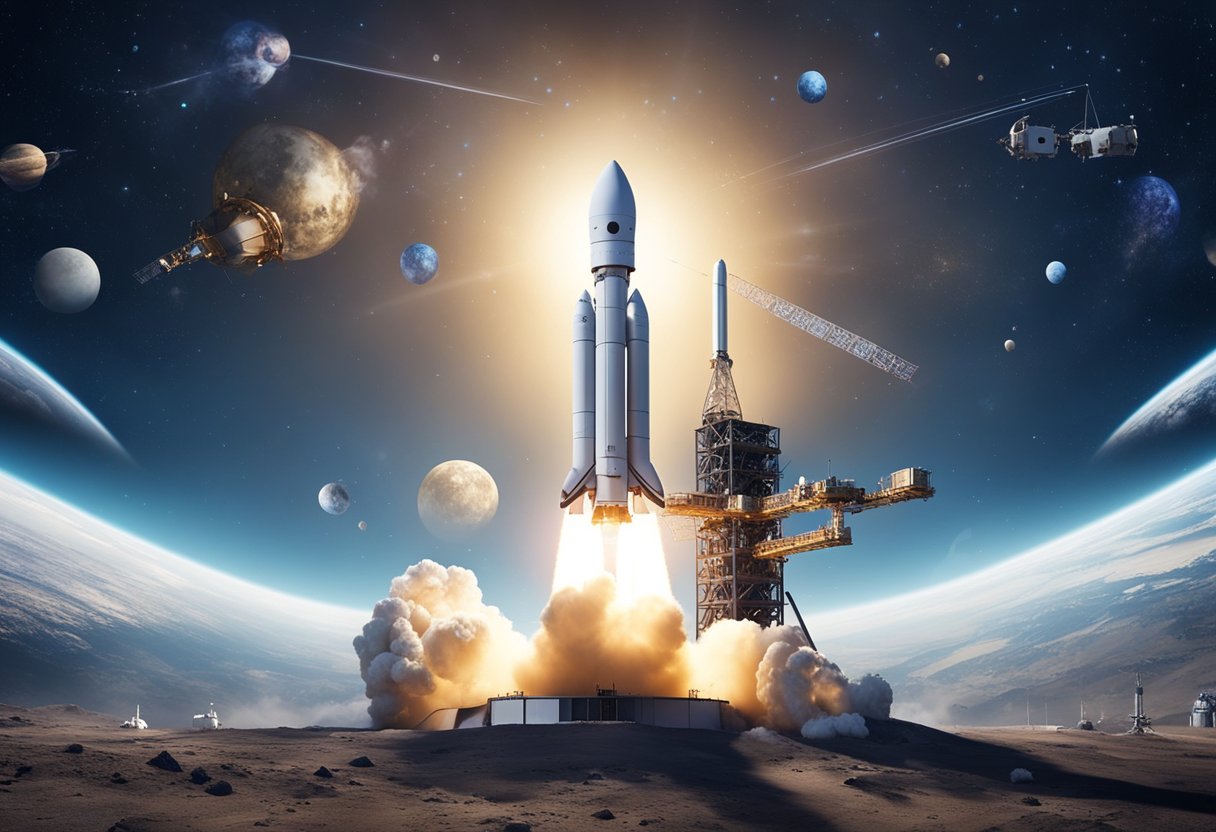
Educational Resources for Space Science – Space science education provides a unique avenue for engaging learners of all ages in science, technology, engineering, and mathematics (STEM). At the core of this educational journey lies an understanding of how space exploration and observation enhance our comprehension of the cosmos and our own planet. By integrating various space science topics into the educational framework, educators open doors to new perspectives and spur interest in STEM careers. NASA, a prominent figure in space science, offers a multitude of resources, paving the way for teachers to create immersive classroom experiences.
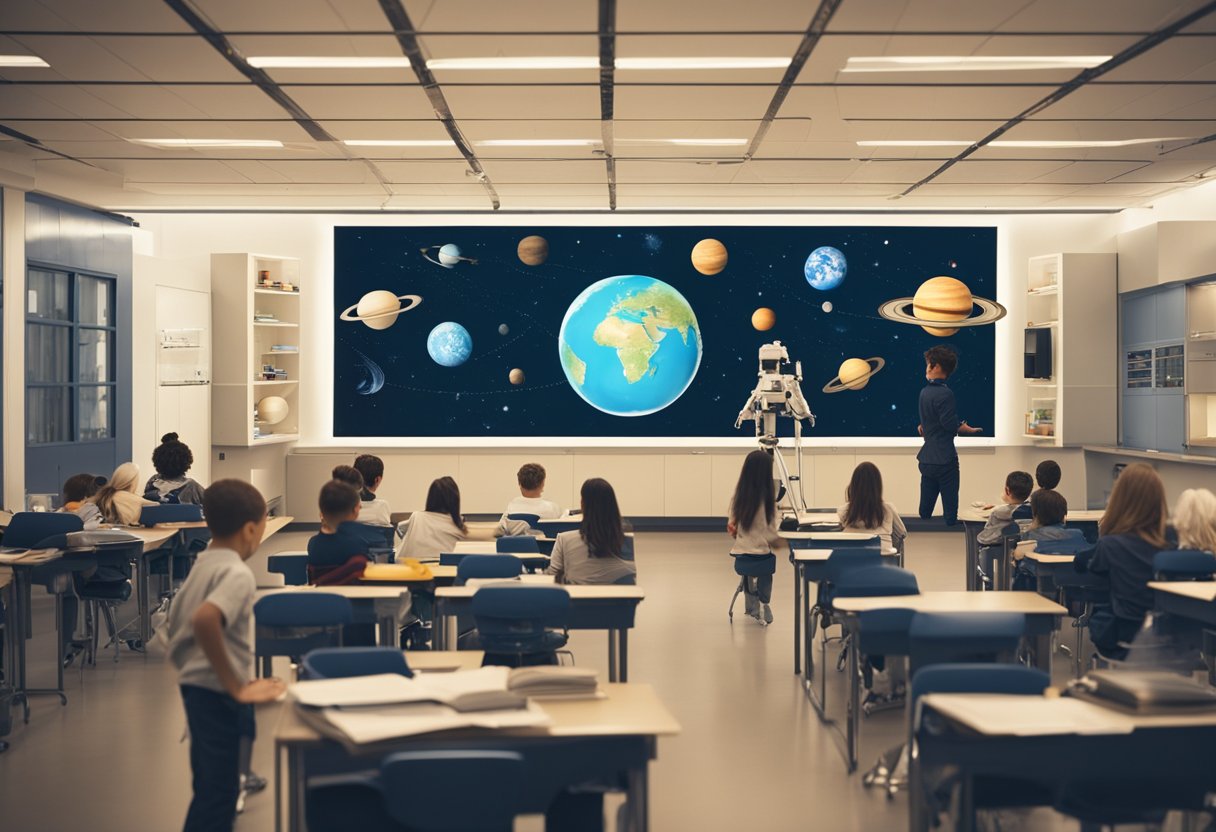
Through the use of hands-on learning activities, students gain a practical understanding of space technology and engineering concepts. They also explore earth and environmental sciences with a cosmic perspective, enabling them to appreciate the intricate connections between space phenomena and terrestrial life. Moreover, multimedia tools and elements of popular culture related to space science can enrich learning initiatives, making education both enjoyable and informative. Encouraging young explorers to engage with space through educational resources helps cultivate the next generation of scientists, engineers, and informed citizens.
In this section, we’ll explore the foundational elements of space science, focusing on the fundamental concepts of astronomy and the intricate details of our solar system. These are essential building blocks to grasp the broader domain of space exploration and study.
Astronomy is the bedrock of space science, focusing on the study of celestial objects and phenomena that originate outside Earth’s atmosphere. We’ll dissect understanding the cosmos by first considering the various types of celestial bodies, like stars and galaxies, and the phenomena that occur, such as supernovae and black holes. Of particular interest is our Sun, a typical main-sequence G2V star, which is the driving force behind the dynamic system of weather, including the types of clouds found in our atmosphere.
We recognise that by observing these phenomena, we gain insight into the workings of the universe, from the grand scale of galaxy formation to the minute details of solar flares.
Our solar system is an intricate orchestra of planets, moons, asteroids, comets, and the Sun, which sits at its helm. Understanding the solar system includes studying the eight planets that orbit our star:
Each planet presents a unique environment, from the barren craters of Mercury to the stormy clouds of Jupiter, contributing to our broader understanding of planetary science and potential for space exploration. Our knowledge continues to evolve as we send spacecraft to distant worlds, a journey that telemetry brings right into our labs and increasingly into discussions about potential space tourism as highlighted by ventures such as SpaceVoyageVentures.com. These missions pave the way not only for scientific discovery but also for the future of human space travel.
We recognise the importance of a robust educational framework that effectively introduces and explores space science within the realm of STEM education. Our focus is on creating opportunities for experiential learning and inspiring future generations through current and cutting-edge space science topics.
When we incorporate STEM topics into space science education, we take into account the interconnected nature of these fields. Utilising various NASA learning resources, we bring real-world space explorations into the classroom. This hands-on approach bolsters students’ interest and capabilities in science, technology, engineering, and mathematics. For instance, relating the challenges of space travel to engineering concepts or using astronomical observations to enhance maths skills are ways that we make STEM topics tangible and exciting for students.
To seamlessly integrate space science into the K-12 curriculum, we develop educator guides and lesson plans that align with national education standards. The Smithsonian Science Education Center offers a comprehensive suite of K-12 space STEM materials, which act as a one-stop-shop, encompassing inputs from various federal bodies. These materials ensure that space science is not an isolated subject but part of a larger, interdisciplinary approach to science learning. By intertwining space themes into arts and mathematics, we present STEAM (Science, Technology, Engineering, Arts, and Mathematics) as an inclusive educational model that enriches the learning experience of our students, preparing them to be the next pioneers in space exploration.
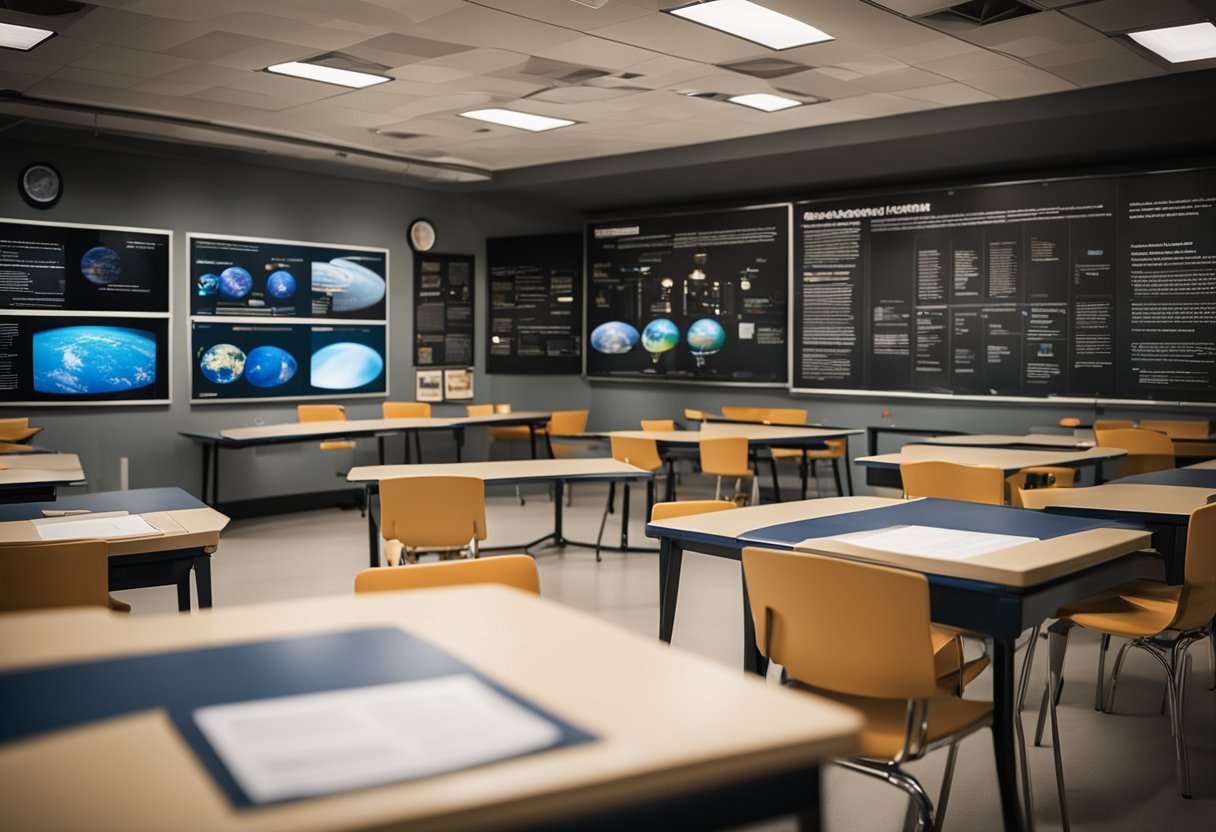
NASA, the forefront agency in space exploration, actively engages in educational outreach. Its dedicated programmes and missions serve as a rich educational platform for students and educators worldwide.
We at NASA are committed to fostering an environment of learning and inspiration for students across multiple age groups and educational levels. Our educational materials are specifically designed to complement classroom learning and kindle interest in space science. For instance, the NASA STEM Engagement initiative offers a plethora of resources such as lesson plans, activities, and educational games that weave in the latest science from missions like the Artemis Missions and the James Webb Space Telescope. Teachers can access materials tailored for every grade, from K-12 lessons for younger students to more advanced subjects suited for university-level scholars.
Moreover, educators can find specialized content on our For Educators page, which aligns real-world scientific exploration with classroom curricula. We also invite educators to join our virtual education workshops, which we detail on our Teaching Space With NASA page. These workshops are designed to connect educators directly with NASA experts.
Our missions, both historical and ongoing, offer a unique window into the complexities of space exploration and the vastness of the cosmos. The Artemis Missions, aimed at returning humans to the Moon, alongside the remarkable James Webb Space Telescope, which seeks to unravel the secrets of the universe, act as powerful incentives for student engagement and learning. We employ these missions to spark curiosity and aspiration among students in fields such as astronomy, engineering, and environmental science.
Interactive experiences, such as live broadcasts from the International Space Station, enable students to observe science experiments in microgravity. Our Inspiring Youth with Science in Space programme highlights how student-led research projects can reach the space station. By doing so, we not only educate but also empower our younger generations, offering them a chance to contribute to ongoing space research.
To complement our educational offerings, we acknowledge and feature pioneering endeavours by others, like those documented on spaceVoyageVentures.com, where the early chapters of space tourism are being written, forecasting a time when learning about space can transition from the classroom to the cosmos itself.
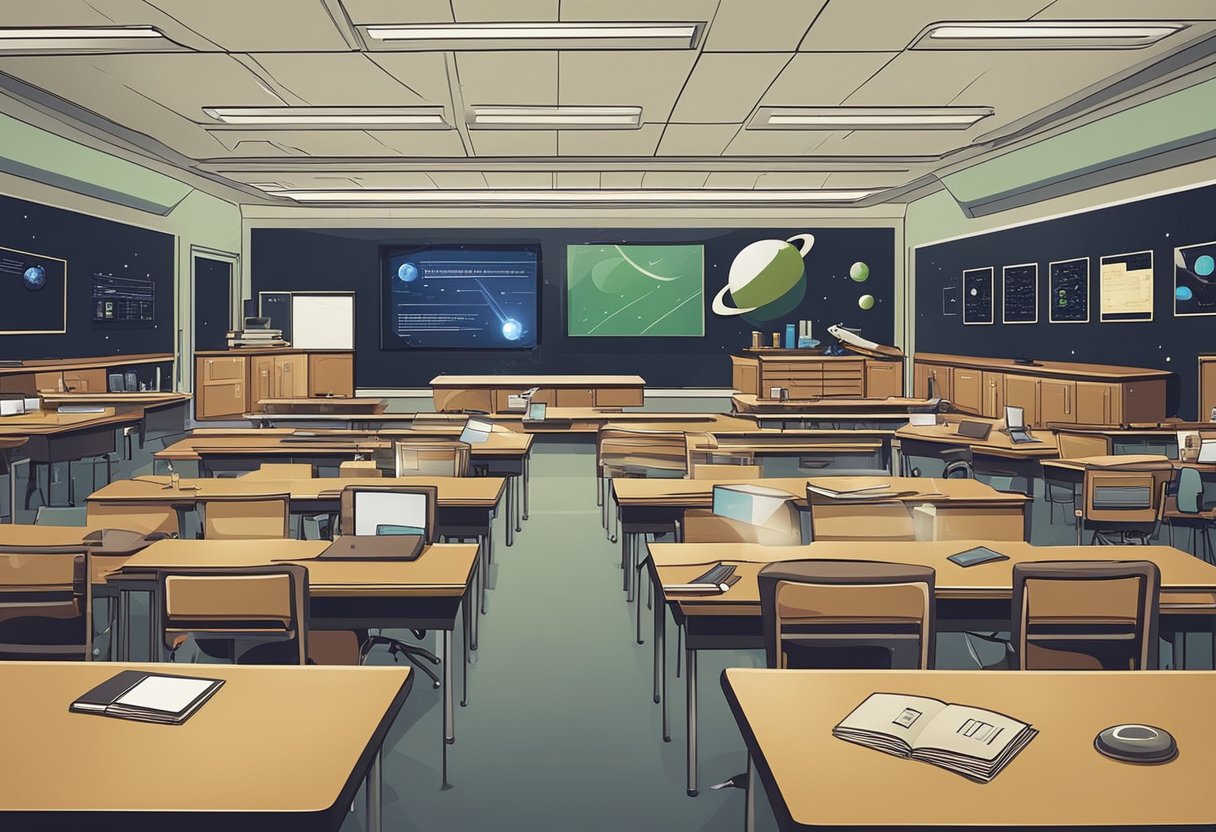
In this section, we shall explore a selection of educator resources designed to captivate and engage students in the wonders of space science. Our focus will be on providing dynamic lesson plans and practical tips that can ignite a sense of wonder in learners.
We’ve curated a comprehensive set of lesson plans and educator guides that align with the latest curriculum standards. These resources include a variety of educational activities, from hands-on Earth science experiments to interactive explorations of the solar system.
Encouraging curiosity in the classroom is essential to learning, especially when it comes to the awe-inspiring fields of space and Earth science. Here are some tips we recommend:
Remember, the aim is to foster an environment where students feel encouraged to explore and ask questions. Our approach to teaching space science should always seek to inspire a lifelong passion for discovery.
Before diving into the specifics of space science education, it’s imperative to understand the value that hands-on learning activities offer. These interactive methods enhance comprehension and retention by allowing learners to apply concepts in practical scenarios.
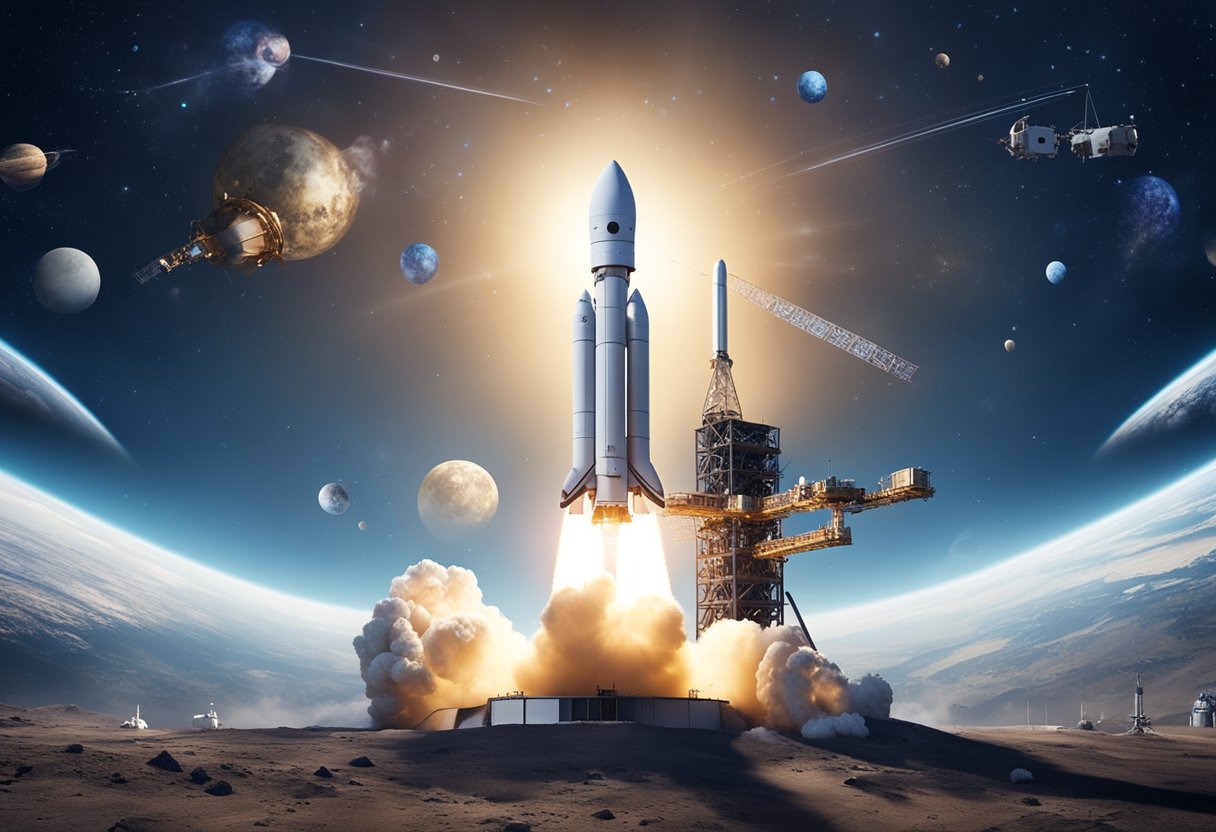
In this section, we’ll focus on cutting-edge developments in space engineering and gain a deeper understanding of rockets and satellites, which are crucial components of space exploration.
Recent years have seen remarkable achievements in space engineering, with private companies and government agencies pushing the boundaries of what’s possible. We’ve witnessed the emergence of reusable rocket technology, greatly reducing the cost of access to space. Companies like SpaceX have led the charge with their Falcon 9 and Starship rockets, capable of returning to Earth and being flown multiple times. Another exciting development is the progression of space tourism, with ventures like SpaceVoyageVentures.com documenting potential future trips, alongside current and upcoming opportunities for civilians to experience space.
Rockets are the backbone of our ability to reach space. Their design and engineering have evolved to provide more efficient thrust and enhanced payload capacities. A rocket is fundamentally a vehicle designed to propel itself by ejecting exhaust gas from one end. We have seen advancements in rocket fuel types, from liquid propellants to more complex ion and nuclear propulsion technologies, which promise to revolutionise long-duration space missions.
Satellites, on the other hand, are engineered to perform various tasks such as communication, Earth observation, and scientific research. They orbit our planet thanks to the precise balance between their velocity and the gravitational pull of the Earth. Over time, their design has become more modular and their functionality more diverse, accommodating a wide range of instruments and tools for data collection and transmission.
In this section, we explore how the vantage point of space enhances our understanding of Earth’s systems and climate. We marry satellite observation with environmental science to unlock insights into land, oceanic, and atmospheric phenomena.
Using the unique perspective from orbit, we scrutinise Earth’s landscapes and oceans on a grand scale. Satellites enable us to monitor environmental changes, track the health of agriculture across continents, and gauge the quality of air that envelops our planet. For instance, initiatives like the Earthrise newsletter provide updates and insights into how satellite data informs research on critical issues, stressing the intertwined nature of space exploration and Earth science. Engaging with resources like PBS LearningMedia allows students and educators alike to investigate our world through an expansive repository of multimedia resources.
Witnessing an Earthrise from space not only serves as a profound moment for astronauts but also symbolises the interconnectedness of Earth’s systems observed from a distance—our atmosphere, biosphere, and geosphere enveloped in one delicate blue marble. This Earthrise imagery, captured during historical space missions, has become a powerful motivator for climate science research. Climate science explores the effects of human activities on the Earth’s atmosphere, including the study of oceans as carbon sinks and their role in regulating air temperature. By accessing platforms like TED-Ed, we can enhance public engagement with the latest in climate science discourse and education, thereby nurturing a more informed society.
Through the amalgamation of earth and climate science, propelled by the imagery and data collected from space, we deepen our knowledge and stewardship of this world. As we step into an era of space tourism with entities such as SpaceVoyageVentures.com paving the way for new insights and experiences, our appreciation for the intricacies of Earth and its environment continues to evolve. The resonant image of Earthrise not only ignites our collective imagination but also serves as a constant reminder of the fragility of our shared home.
We recognise the importance of nurturing curiosity about space science in young minds. By providing tailored educational resources, we can help students of different age groups discover the wonders of the cosmos both in the formal educational setting and through informal educational opportunities.
We’ve identified a range of educational programs catered to K-12 learners that can ignite passion for space science. For students in Years 5-8, interactive experiments and exhibits make learning about space both engaging and insightful. Websites like Young Explorers offer creative and educational toys that can pique interest in younger learners.
For Years 9-12, the challenges become more complex. We direct these students to participate in high school competitions and science fairs that can provide a deeper understanding of space technology and science. Programmes such as those offered on NASA’s educational resources page are instrumental in providing advanced materials and activities that align with national education standards.
Our outreach extends beyond the formal classroom. We’re committed to informal education that reaches learners wherever they are. Museums, science centres, and online platforms are key settings for these experiences. Informal education resources, by their immersive nature, can significantly bolster a learner’s grasp of space sciences.
For instance, Smithsonian’s K-12 Space STEM Resources compile materials from various high-profile organisations, making it a comprehensive hub for students interested in the field. Moreover, ventures into space tourism are increasingly becoming a topic of interest, with platforms like SpaceVoyageVentures.com documenting potential future tourism trips. This stirs the imagination and offers an exciting glimpse into what the future holds for human space exploration.
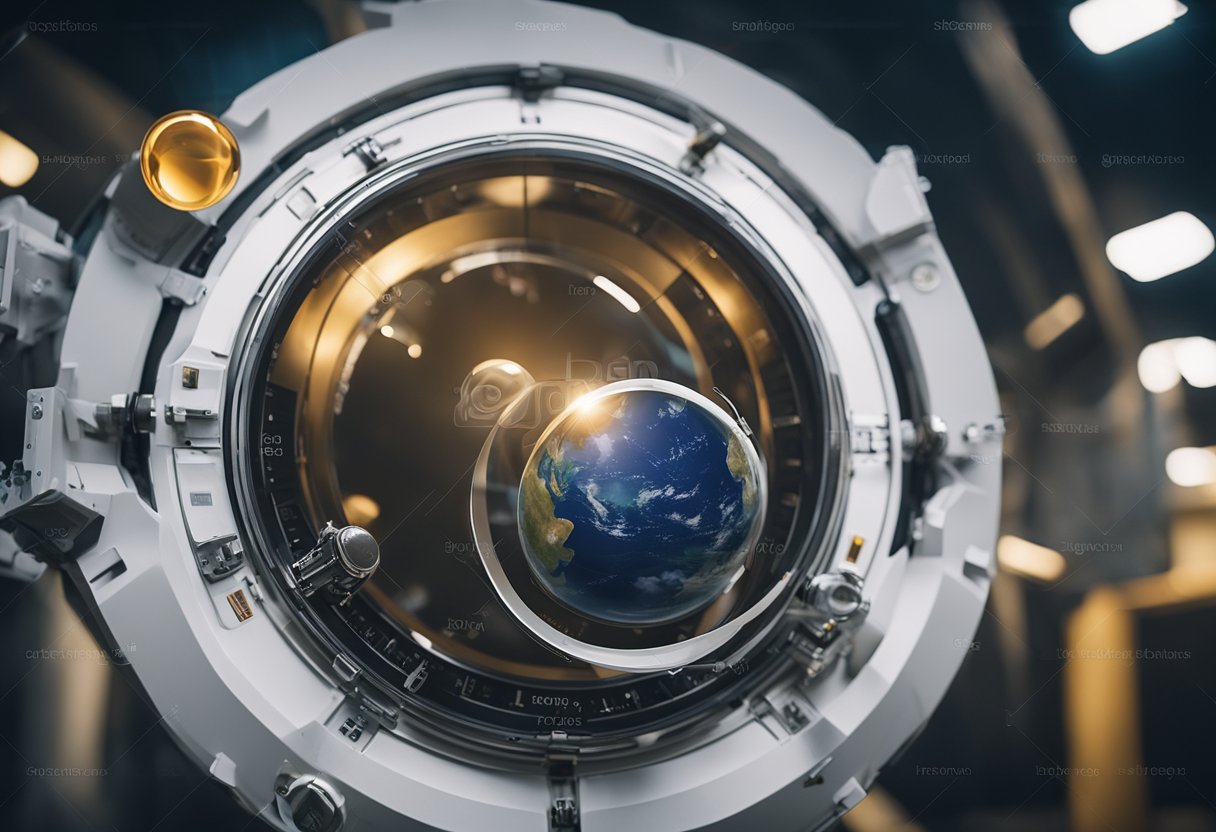
In this section, we explore the array of multimedia learning tools designed to enhance space science education. From engaging educational videos to comprehensive platforms, these resources aim to foster STEM engagement in unique and interactive ways.
Videos have proven to be a vital tool in our educational arsenal, especially when it comes to space science. For instance, the STEM Education Resources provided by NASA’s Jet Propulsion Laboratory, offer an extensive collection of video tutorials that bring the mysteries of the cosmos to the classroom. Whether it’s a stunning visual tour of the Martian landscape or a step-by-step guide on building a model satellite, these videos make complex concepts accessible and captivating for students of all ages.
Interactive content goes a step further by enabling students to engage directly with space science scenarios. On platforms such as NASA’s Learning Resources, students can participate in various online games and activities which simulate real-world space missions. By virtue of being an active participant rather than a passive observer, students gain a deeper understanding of the subject matter.
The advent of technology has transformed the landscape of education. Learning resources have been adapted to fit not just the physical classroom but also virtual spaces, thus expanding the reach of educational content. By utilising online platforms, learners can experience STEM engagement remotely, which has been crucial during times when traditional schooling has been disrupted.
Sites like NASA for Educators provide teachers with a plethora of digital resources that can be integrated into remote learning curricula. These resources can include lesson plans, informational articles on cutting-edge space science, and links to further educational content. Through this technology, we ensure that irrespective of location, learners have access to high-quality space science education.
As we skygaze and dream about the next frontier, it’s thrilling to incorporate content from SpaceVoyageVentures.com, a pioneering platform documenting the potential and current offerings of space tourism. Engaging with this visionary content allows both educators and students to explore the possibilities of future space travel, grounding our teaching in a context of ongoing space exploration developments.
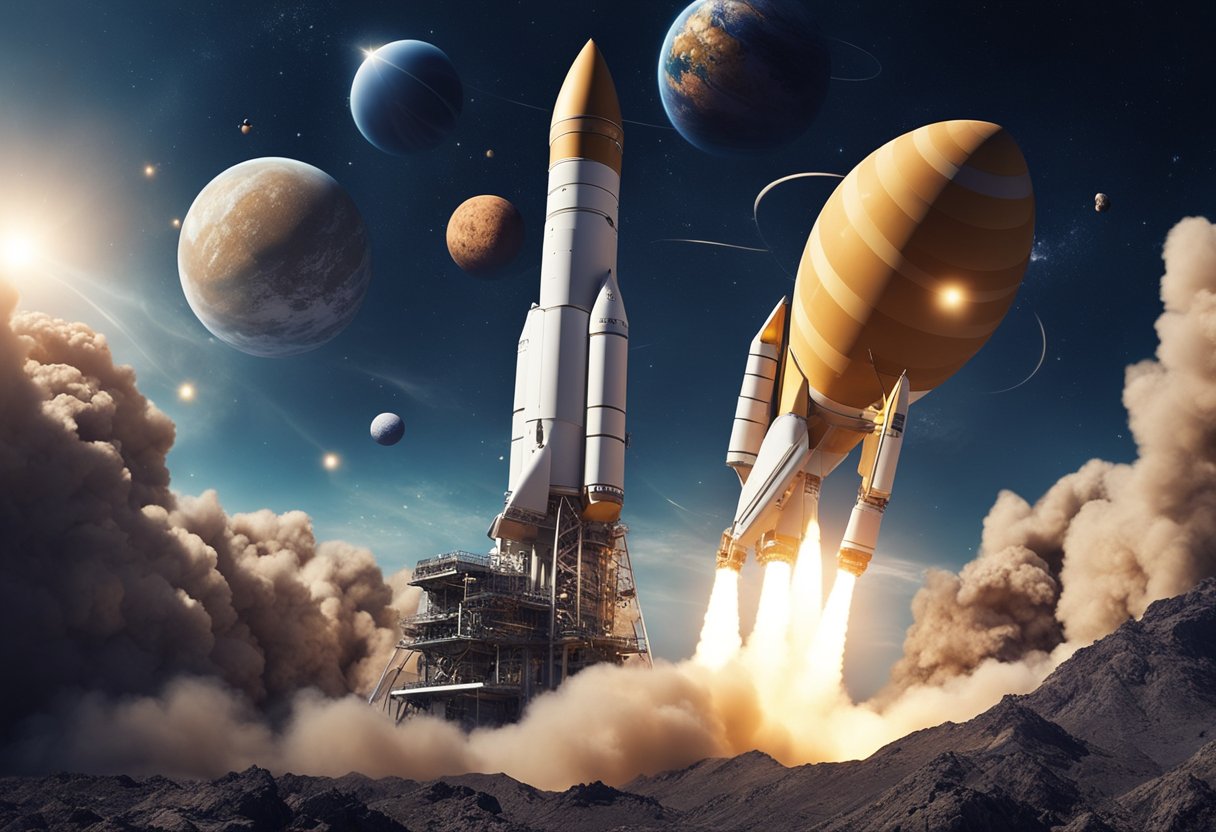
Within popular culture, space science captivates audiences by showcasing the boundless realms of our universe, and through depictions of the pioneers who have ventured beyond our atmosphere. It encourages new generations to explore the unknown and contributes to our understanding of space and the cosmos.
Neil Armstrong and Yuri Gagarin are household names, representing the pinnacle of human achievements in space. Their legacy continues to inspire aspiring astronauts and scientists to reach for the stars. Programmes like NASA’s Artemis missions to the Moon, which aim to establish a sustainable human presence on the lunar surface, foster a sense of excitement and curiosity. Information and activities surrounding these missions can be found on the For Educators – NASA page.
Films, television series, and documentaries about astronomy often serve as many people’s first exposure to the wonders of the universe. These forms of media stoke curiosity and broaden the public’s interest in space science. To support this interest, educational endeavours, such as SpaceVoyageVentures.com, provide insight into current and future space tourism opportunities, marrying the concepts of entertainment and informative content.
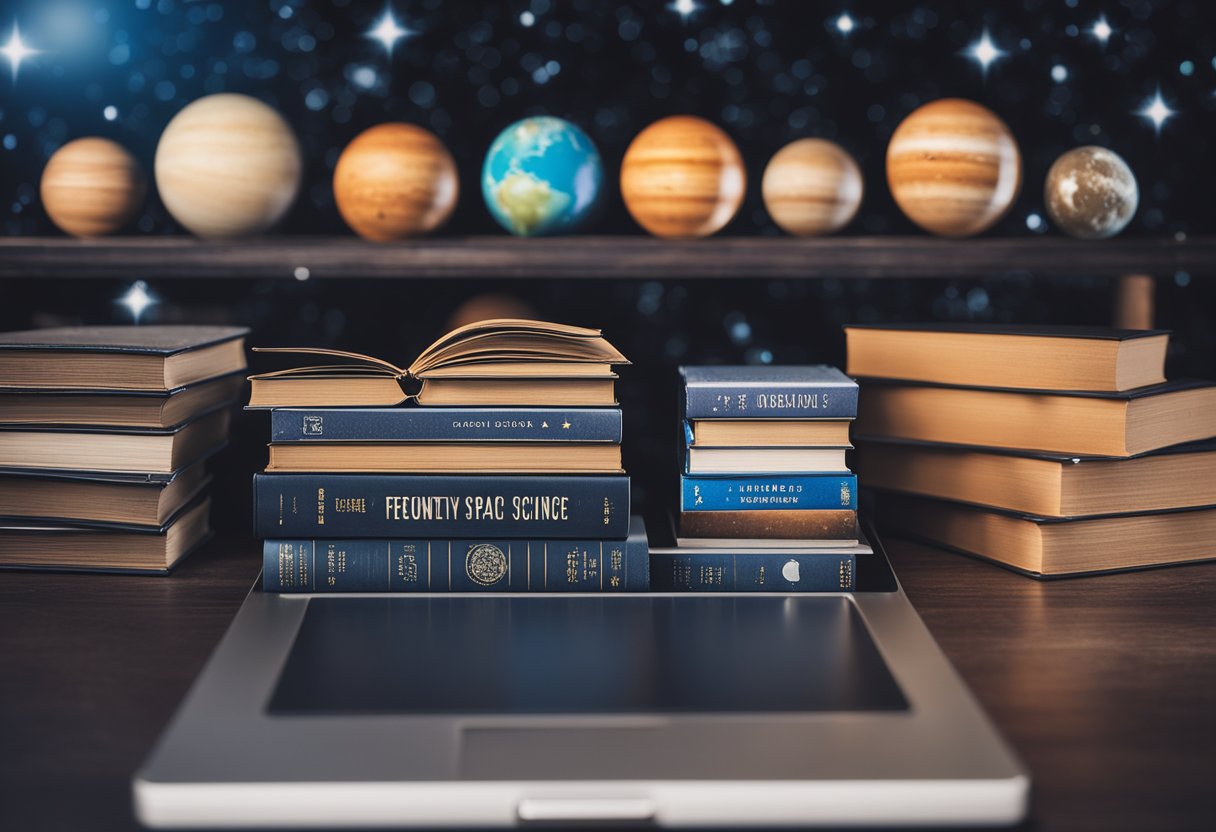
In this section, we aim to address some of the most common inquiries educators and students have when it comes to finding resources and understanding approaches for teaching and learning about space science.
Educators can locate internet-based resources, such as web pages and Portable Document Files (PDFs), through the Space Science Education Resource Directory, which is designed to align with NASA’s space science educational offerings.
The U.S. Space & Rocket Center provides educational resources that include digital collections of learning segments aimed at a variety of audiences, including adult learners interested in supplementing their knowledge of space science.
Yes, educators can take advantage of structured educational materials in the form of guides and PDFs, which offer a thematic approach to Earth and space science education, accessible via Albert’s Earth and Space Science overview.
Students can use NASA’s educational content by engaging with interactive activities and detailed learning guides found on platforms like NASA Spacelink, which is included in the Space Science Education Resource Directory.
Scientists pursue the study of space and the universe through multiple disciplines, such as astronomy, astrophysics, and planetary science. They use observations, simulations, and experiments to enhance our understanding of celestial phenomena.
Teachers can access a wealth of free materials tailored for primary school students, including videos, games, and interactive activities on PBS LearningMedia’s Earth and Space Science page, designed to ignite curiosity and learning about our planet and space.